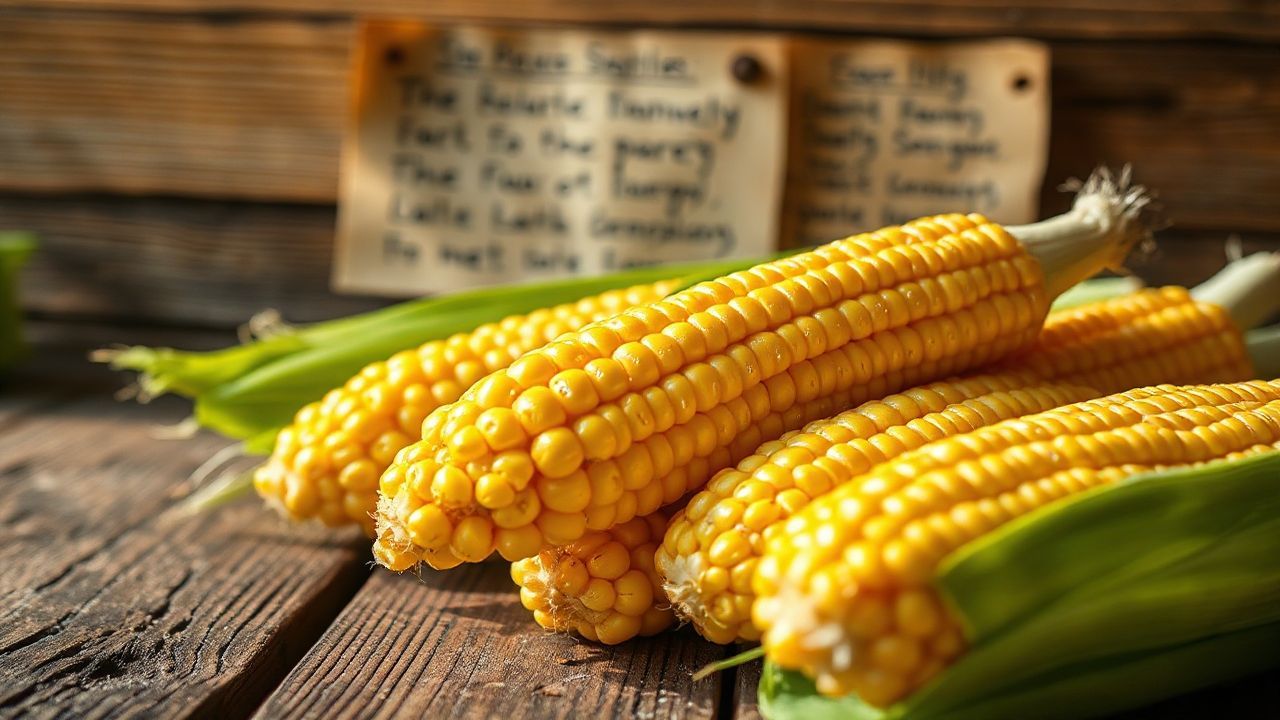Introduction to corn
Botanically speaking, corn is a member of the grass family, Poaceae. It shares this classification with other grains such as wheat, rice, and barley. The edible portion of corn, the kernel, is a fruit produced within a protective husk. This places corn in the category of a fruit rather than a vegetable.
The confusion arises from the culinary realm, where vegetables are often defined as plant parts consumed for their nutritional value, excluding fruits and grains. In this sense, corn is often classified as a vegetable, along with other starchy plants like potatoes and sweet potatoes.
To further complicate matters, sweet corn, a variety of corn consumed for its sugary kernels, is commonly regarded as a vegetable. This misconception stems from its sweet flavor and the way it is prepared and consumed, similar to other vegetables.
Ultimately, whether corn is considered a vegetable or a fruit depends on the context in which it is viewed. Botanically, it is a fruit, but in a culinary setting, it can be classified as a vegetable. Its versatility and nutritional value make it a valuable addition to any diet, regardless of its official categorization.
Botanical classification of corn
Corn, also known as maize, is a member of the Poaceae family, which includes grasses. It is a monocot, meaning it has one seed leaf (cotyledon) in its embryo. Corn is classified as a cereal grain, as it is the mature fruit of a plant that is cultivated for its edible seeds. The corn plant is a tall, annual grass with a tassel at the top and rows of kernels along the cob. The kernels are the edible part of the corn plant.
Corn is not a vegetable in the botanical sense. Vegetables are defined as the edible parts of plants that are not fruits, seeds, or roots. Corn kernels are seeds, so they are not considered vegetables. However, corn is often referred to as a vegetable in the culinary sense, as it is used in many savory dishes.
The botanical classification of corn is as follows:
Kingdom: Plantae
Division: Magnoliophyta
Class: Liliopsida
Order: Poales
Family: Poaceae
Genus: Zea
Species: Zea mays
Corn as a vegetable vs. grain vs. fruit
Nutritional profile of corn
Corn is rich in carbohydrates, primarily in the form of starch, which serves as a primary source of energy for the body. It also contains dietary fiber, which promotes satiety and supports digestive health. Corn is an excellent source of vitamins and minerals, including vitamin A, which is crucial for vision and immune function, and vitamin C, an antioxidant that protects against cell damage. It is also a good source of potassium, which helps regulate blood pressure, and phosphorus, which is essential for bone health.
In addition to its nutrient content, corn is a versatile ingredient that can be consumed in various forms. It can be eaten whole, roasted, grilled, or boiled. Cornmeal, made from ground corn, is used in bread, tortillas, and other baked goods. Cornstarch, extracted from corn, is commonly used as a thickening agent in sauces and soups.
While corn is generally considered a healthy food, it is essential to consume it in moderation, as it can be high in calories and carbohydrates. Individuals with diabetes or glucose intolerance may need to limit their corn intake to avoid blood sugar spikes. Additionally, corn can be allergenic for some people, causing symptoms such as skin rashes, hives, and digestive issues.
Overall, corn is a nutritious and versatile grain that can provide essential nutrients and energy when consumed as part of a balanced diet. However, it is important to be aware of its potential allergenic properties and consume it in moderation to avoid excessive calorie and carbohydrate intake.
Conclusion: Corn’s versatile identity
Despite its categorisation as a grain, corn’s culinary versatility transcends any single definition. Its sweet and succulent kernels have earned it a place in both sweet and savory dishes, from creamy soups and salads to flavorful tacos and hearty casseroles. Its starchy composition lends itself to a myriad of applications, from the creation of polenta and grits to the production of cornmeal for baking.
Furthermore, the ubiquity of corn in countless cuisines worldwide underscores its profound cultural significance. In Mesoamerica, its origins lie deeply intertwined with ancient civilisations, where it was revered as a sacred crop. Today, it remains a staple food in countless indigenous communities, providing sustenance and nourishment.
In conclusion, the versatile identity of corn defies easy classification. It is both a grain and a vegetable, a culinary chameleon that adapts seamlessly to diverse culinary contexts. Its nutritional value, cultural significance, and remarkable culinary versatility have cemented its place as an indispensable ingredient in cuisines across the globe.

Leave a Reply